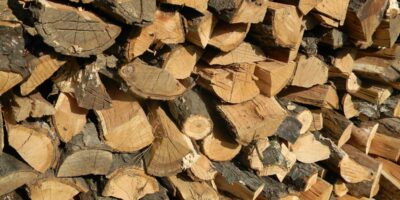Varnish vs Polyurethane: Understanding the Differences and Uses
When it comes to finishing wood, varnish and polyurethane are two of the most common choices. Both offer great protection and enhance the wood’s appearance, but they have distinct characteristics. This article aims to help you understand the differences and uses of varnish and polyurethane so you can make an informed decision for your woodworking project.
Composition and Types

Varnish is a traditional wood finish made from resins, oils, and solvents. When applied to wood, the solvents evaporate, leaving behind a hard, protective layer. There are several types of varnish, including:
- Oil-based varnish: Made from natural oils like linseed or tung oil, it is durable and enhances the wood grain.
- Water-based varnish: Lower in VOCs and dries faster, making it environmentally friendly.
- Spar varnish: Contains UV protectants and is suitable for outdoor use.
Polyurethane is a synthetic resin finish, known for its toughness and water resistance. It comes in two primary types:
- Oil-based polyurethane: Provides a high level of durability and a warm, amber hue.
- Water-based polyurethane: Dries quickly, has low odor, and remains clear over time.
Application and Drying Time
Application methods and drying times differ between varnish and polyurethane. Varnish is typically applied with a brush, and each coat needs a minimum of 24 hours to dry. Sanding between coats is necessary to achieve a smooth finish.
Polyurethane can be applied with a brush, roller, or spray. Oil-based polyurethane requires about 24 hours to dry between coats, similar to varnish. Water-based polyurethane, however, dries much faster, often within 2 to 4 hours. Sanding between coats is also recommended for polyurethane finishes.
Durability and Protection

Durability is an important consideration when choosing a wood finish. Varnish generally offers good protection against moisture and UV rays. This makes it a suitable choice for indoor and outdoor furniture. However, it is less resistant to chemicals and scratches compared to polyurethane.
Polyurethane is renowned for its toughness. Oil-based polyurethane forms a hard, durable film, making it ideal for high-traffic areas such as floors and tabletops. Water-based polyurethane, while slightly less durable, still offers excellent protection and is often chosen for its low odor and quick drying time.
Appearance
The appearance of finished wood can vary depending on whether you use varnish or polyurethane. Oil-based varnish imparts a warm, rich tone to the wood, highlighting its natural beauty. Over time, this type of varnish may darken slightly due to exposure to light.
Water-based varnish, on the other hand, provides a clearer finish that does not yellow over time. This makes it an excellent choice for light-colored woods.
Oil-based polyurethane also gives the wood an amber hue, which can enhance the depth and warmth of the wood grain. Water-based polyurethane remains clear, so it won’t alter the wood’s natural color, making it ideal for preserving the original look of lighter woods.
Maintenance

Maintenance is another factor to consider. Varnished surfaces can be cleaned with a damp cloth and mild detergent. They may need periodic touch-ups or reapplication, especially for outdoor items exposed to the elements.
Polyurethane finishes are generally easier to maintain. They are resistant to water, chemicals, and wear, making them suitable for items that endure a lot of use. Cleaning typically involves simple dusting and wiping with a damp cloth.
Environmental Impact and Safety
Environmental considerations and safety have become increasingly important. Oil-based products, both varnish and polyurethane, contain higher levels of volatile organic compounds (VOCs). These can be harmful if inhaled and contribute to air pollution.
Water-based products are more environmentally friendly, with significantly lower VOC levels. They are also safer to use, causing fewer health concerns during application. Proper ventilation is still recommended for both types of finishes.
Cost
Cost can be a deciding factor for many projects. Generally, oil-based varnish and polyurethane are less expensive than their water-based counterparts. However, the longer drying times and higher VOC levels may offset the initial savings.
Water-based finishes tend to be more expensive, but their quicker drying times, lower odor, and reduced environmental impact can be worth the extra cost for many users.
Final Thoughts
Choosing between varnish and polyurethane depends on your specific project needs. Understanding the differences in composition, application, durability, appearance, maintenance, environmental impact, and cost will help you make an informed decision.
“`




Subscribe for Updates
Get the latest articles delivered to your inbox.
We respect your privacy. Unsubscribe anytime.